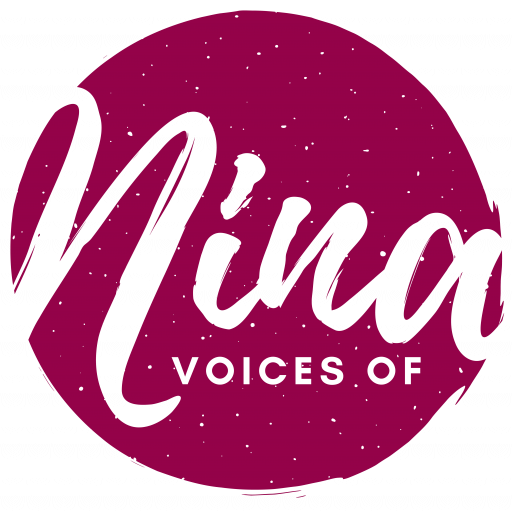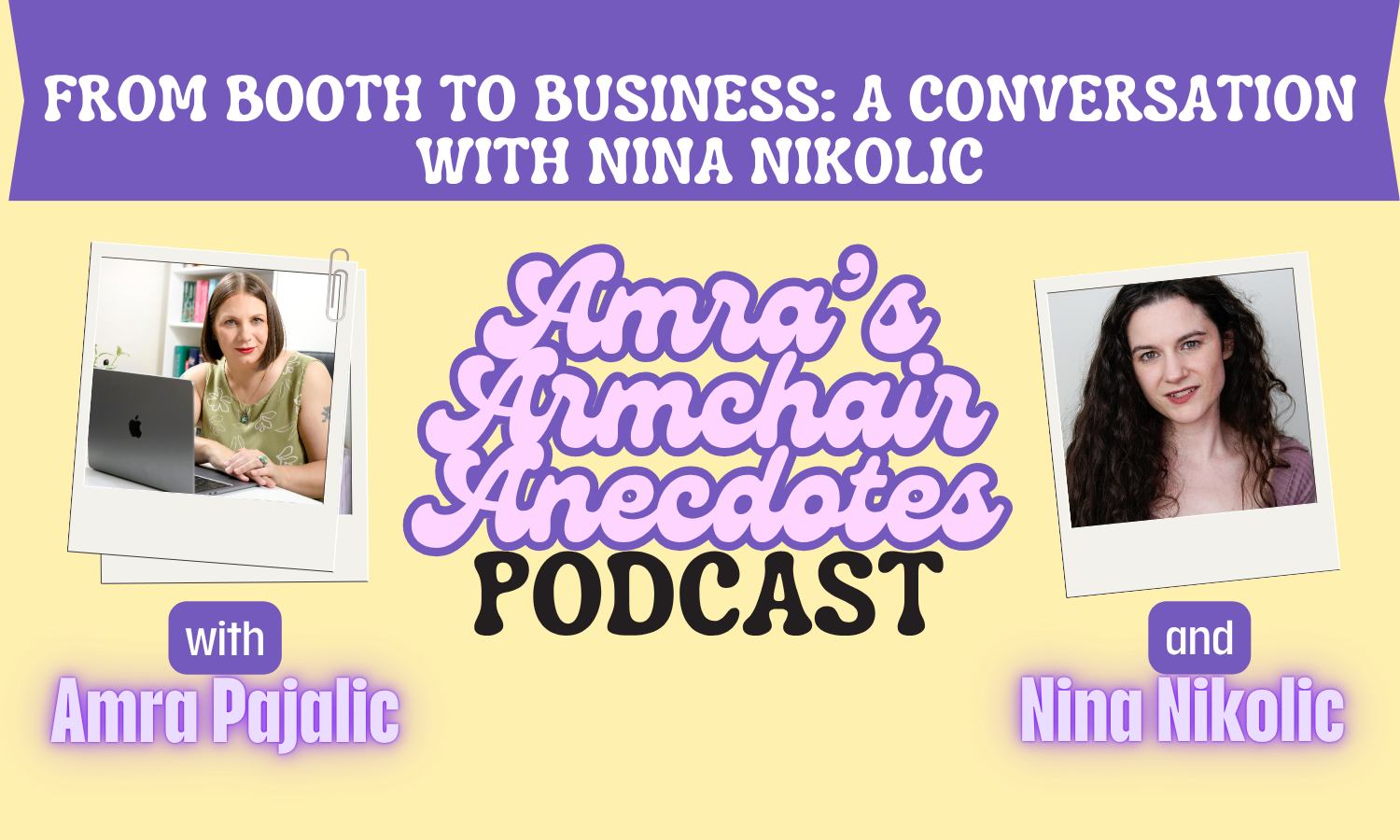From booth to business: The creative grind you don’t see
The grind of creative freelancing isn’t often visible to the world. The fun stuff is what happens in the booth on a job. The hard part is everything we do behind the scenes to get that job in the first place.
Most days I bounce between the booth and spreadsheets. I check my e-mails for anything urgent. I warm up, record, edit. Then I switch to quotes, contracts, dreaded direct marketing. And pep talks to myself that stop a wobble in my self-confidence during that process from becoming a spiral. It is not as glamorous as it seems, but it’s how I stay active as an artist. And ultimately make a living collaborating and sharing that with other humans.
Why visibility matters for creatives
Showing up builds trust. A reel, a post, or a simple comment can be the nudge that lands a lead into your inbox. Your website holds the body of your work. Your social media is your proof of life and recent activity at a glance. It’s the easiest way to show buyers that you’re currently active, and in which areas.
This is how I’ve chosen to view the current online landscape, anyway.
Growing ones’ audience is wonderful. It’s lovely to know that my work is touching other humans enough that they wish to stay connected, to see what I do next. While there are many questionable practices at the executive level these days about which actor to hire based on follower count… sigh… That is a conversation for another day, and not necessarily applicable to the primarly purpose of keeping my personal social media channels alive.
In a recent chat with author and podcaster Amra Pajalic, we dug into the parts of voice work most people never see: the systems that protect your time, your voice, and your sanity.
Systems that keep work sustainable
- A simple CRM you can keep up with
- Clear rates and contracts to protect your energy and livelihood
- Vocal care routine – bonus points for keeping body fit and healthy to benefit your voice
- SEO plan for your website, so people can actually find you – I suggest chatting with Gina Scarpa if you’re keen to pursue this one!
- Self-care practices like journalling, hobbies and sacred “me time” to come back to yourself
Maintain human connection
In the current AI landscape, I find myself gravitating to other humans. More frequent casual check-ins. Voice notes. I’ve even sent videos to people to feel more connected, if I can’t catch up with them in person. In the world of creative freelancing, having real conversations around the work keeps us motivated.
Tracking these touchpoints can help remind you at a glance what was the last thing you chatted about. How did it go? What might be on deck to chat about the next time you catch up? I used to feel icky about keeping these kinds of notes. But the truth is, there are several studies showing that the brain can only recall so much information. We replace that information over time with anything more recent or urgent to remember. Therefore, I don’t feel bad about taking notes. It shows each person I interact with that I care enough to do so.
A CRM sytem helps with this. I personally use Notion, and have worked with it for many years to build a custom framework that suits me. There are heaps of options out there. If you’re interested in how I use it, I’m always happy to share.
Putting yourself out there
Keeping up with my current contacts is all well and good, but what about new business? Well, on the cold marketing side… You cannot control who emails back. You can control the specificity of what kinds of companies or people you put yourself in front of. How you reach out to them. What you present about yourself. When and how you follow up. And keep track of which of your outreach was successful. That has been the key for me in refining my approach. It’s like my acting training: I define the facts and data, prepare a lot, and then in the moment of connection throw it all out the window and be my compassionate, curious self. The rest is up to the universe.
If you struggle with wrapping your head around cold marketing for your creative freelancing business, reach out to Aimee Smith, Sarah Kennedy or Tom Aglio for coaching. There are also many government-funded local and regional level resources for small businesses in Victoria and New South Wales, if you’re an Aussie.
It’s about reps and building your confidence. Trust the process!
How do you charge for your work?
It’s the wild west out here. You can charge anything you like for voice work. I highly recommend doing your research on local and international union rate guides: MEAA, SAG-AFTRA, Equity, as well as GVAA and indie-friendly rates. Use them as a base-line, and adjust up depending on your personal circumstances, market, equipment, experience and availability. For things to consider that may impact how you value your work, check out my blog post on voice over costs.
Make your rate card easily accessible for potential clients to research. Many corporate clients have let me know that was a sticking point, which led them to reaching out to me in the first place!
How long does it take you to generate and send a quote for each inquiry you get?
Here’s a pro tip – you don’t get paid for all the extra admin you do. Have a solid framework to streamlining those aspects of the job. Not only will you get time back to be a voice actor, business dealings will from you will appear so professional. Potential clients will be impressed that you respond to requests with a professional level quote within an hour of receiving their e-mail. Existing clients will be more impressed that you deliver their finished voice work, together with your invoice, within an hour of receving their e-mail too!
On the flipside, have a process for delivering your recordings together with your invoice, wherever possible. This sounds a little bit “Duh! How else will I get paid?” You’ll be surprised at the number of stories I’ve heard where creatives continually forget to invoice, or don’t have correct information listed on their invoices in order to be paid.
Rounded helps me with all of the above. I’ve never regretted using it. Bonus is that they’re an Aussie based company. Bigger bonus is they’re one of the only accessible platforms I’ve used that allow me to send quotes via e-mail, in a PDF and via a shareable link. Bigger bigger bonus is that there are one-click payment buttons embedded within the invoice to give your clients no excuses to dodge payment. It’s literally easier for them to pay you than to avoid it. Heck, yeah!
Does voice work really need SEO?
It’s great for all creative freelancing professionals! While clients may not necessarily be Googling “available voice artists in my area,” they will be more likely to stumble across your website if you’re coming up in those juicy new AI summaries. The higher your website ranks in various areas, the better your chances of being front and centre when buyers are searching for similar topics within that niche.
Being top of mind within your community in general cultivates organic conversation around you and how you work, leading to referrals as well. Referrals are the most magical kind of lead, as they come with the highest amount of inbuilt trust from a buyer. Treat them like gold. Better yet – refer your friends and colleagues too! Given the opportunity, they’ll be thrilled to return the favour when you come top of mind for a future project!
Keen to hear more about life as a creative freelancer?
Watch my chat with Amra on YouTube:
The episode is also available to listen to on Spotify, or you can view the full transcript and show notes on Amra’s website.
If you have questions about how I personally approach any creative freelancing systems, let me know! You can also book a call with me, or send me a message via social media any time.
Kick ass out there, friend 👊

